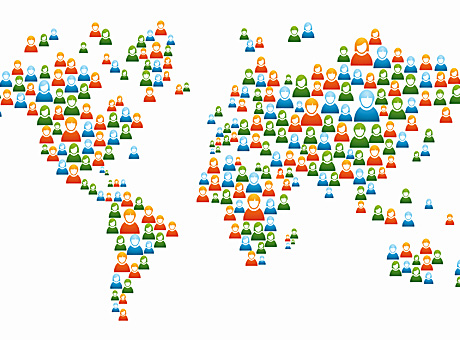
At the genetic level, any two people are more than 99 percent alike. But rare variants — those that occur with a frequency of 1 percent or less in a population — are thought to contribute to rare diseases as well as common conditions ike cancer and heart disease.
By decoding the genomes of more than 1,000 people whose homelands stretch from Africa and Asia to Europe and the Americas, scientists have compiled the largest and most detailed catalog yet of human genetic variation.
The 1000 Genomes Project involved some 200 scientists at Washington University School of Medicine and other institutions. Results detailing DNA variations of individuals from 14 ethnic groups were published Oct. 31, 2012, in the journal Nature. Eventually, the initiative will involve 2,500 individuals from 26 populations.
“With this resource, researchers have a road map to search for the genetic origins of diseases in populations around the globe,” says one of the study’s co-principal investigators, Elaine R. Mardis, PhD, co-director of The Genome Institute at Washington University. “We estimate that each person carries up to several hundred rare DNA variants that could potentially contribute to disease.”
During the pilot phase of the effort, the researchers found that most rare variants differed from one population to another, and that they developed recently in human evolutionary history, after populations in Europe, Africa, Asia and the Americas diverged from a single group. The current study bears this out.
“This information is crucial and will improve our interpretation of individual genomes,” says another of the study’s co-principal investigators, Richard K. Wilson, PhD, director of The Genome Institute and a pioneer in cancer genome sequencing.
New data may explain an individual's susceptibility to disease, response to drugs or reactions to environmental factors.
All study participants submitted anonymous DNA samples and agreed to have their genetic data included in an online database. The researchers first sequenced the entire genome — all the DNA — of each individual. To find the rare variants, they sequenced the small portion of the genome that contains genes — about 80 times for each participant to ensure accuracy — and they looked closely for single letter changes in the DNA sequence called SNPs (single-nucleotide polymorphisms).
The researchers discovered 38 million SNPs and numerous structural variations, both of which can help explain an individual’s susceptibility to disease, response to drugs or reaction to environmental factors.
“This tremendous resource builds on the knowledge of the Human Genome Project,” says co-author George M. Weinstock, PhD, associate director of The Genome Institute. “Scientists and, ultimately, patients worldwide will benefit from the extensive effort to understand the shared features and geographic diversity of the human genome.”







